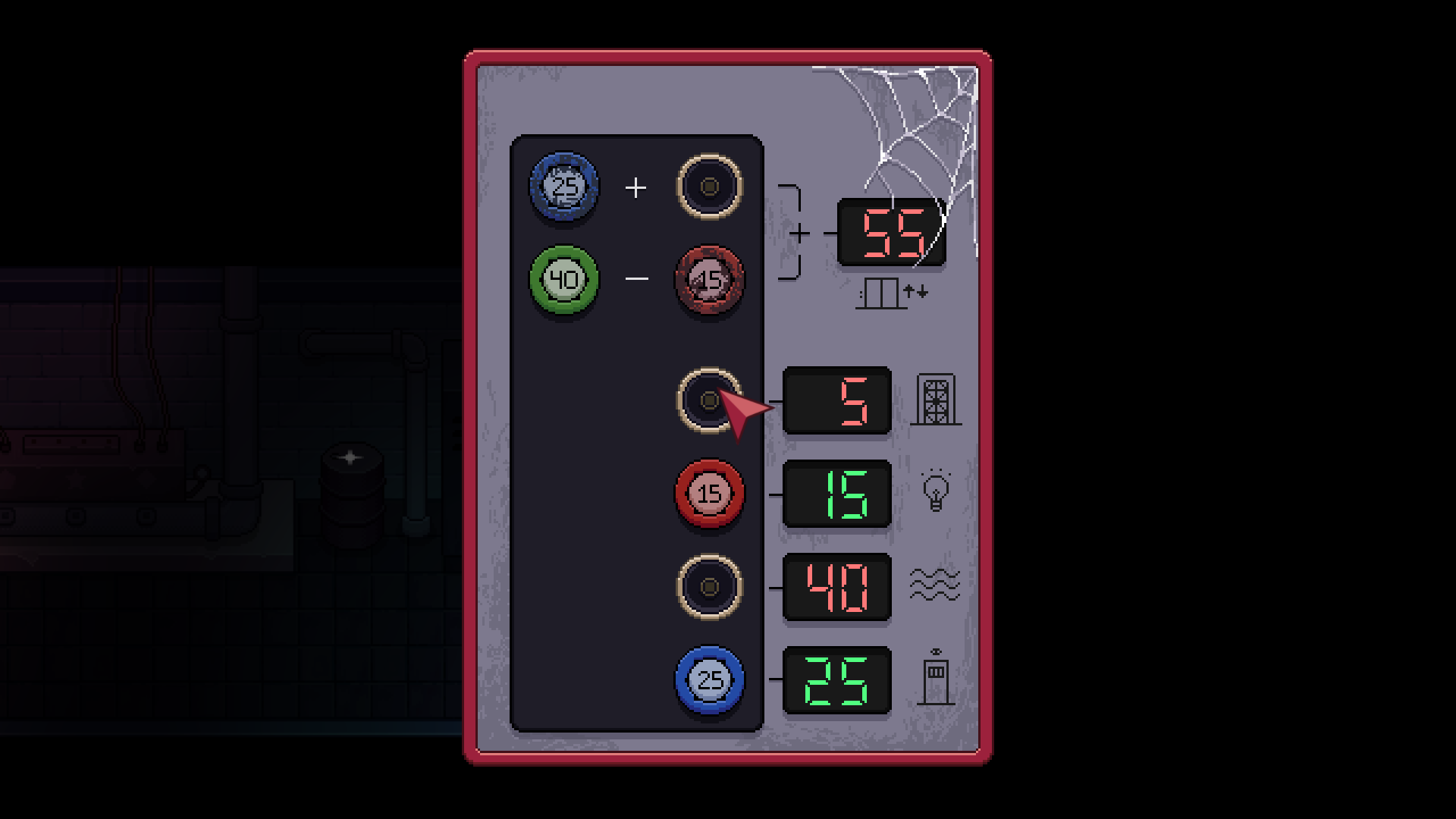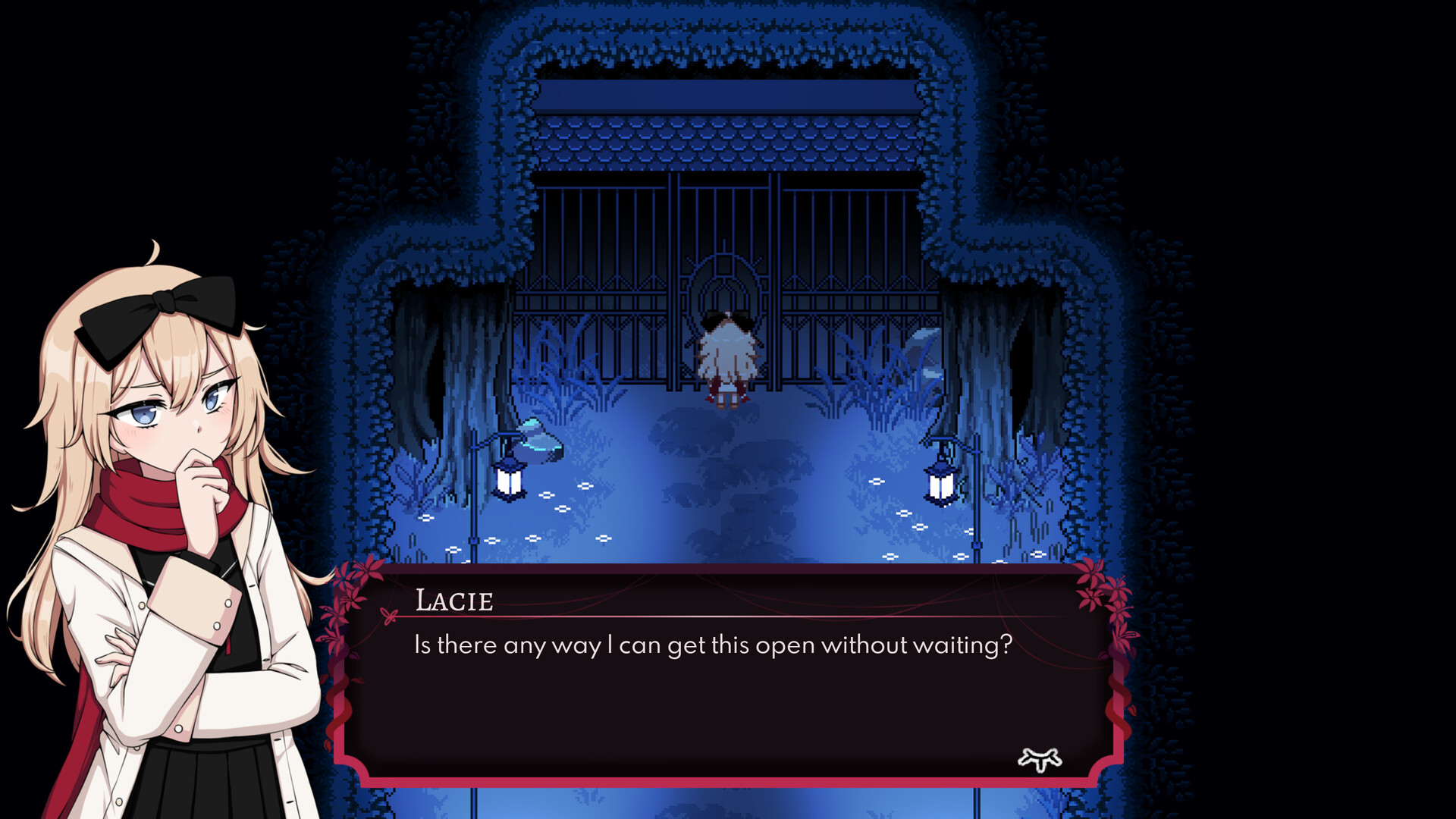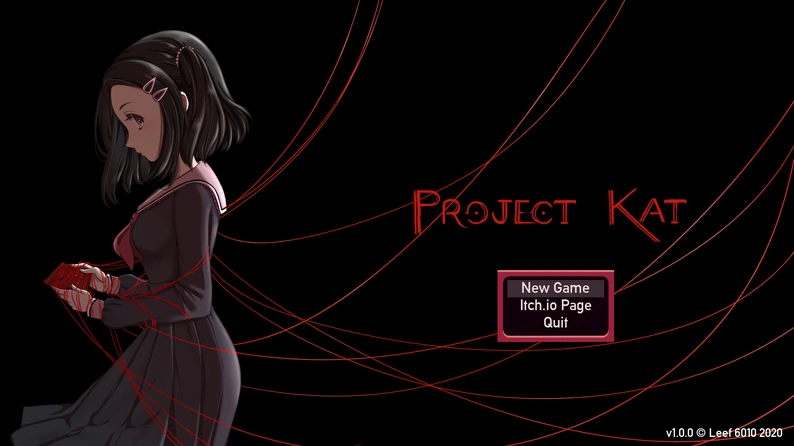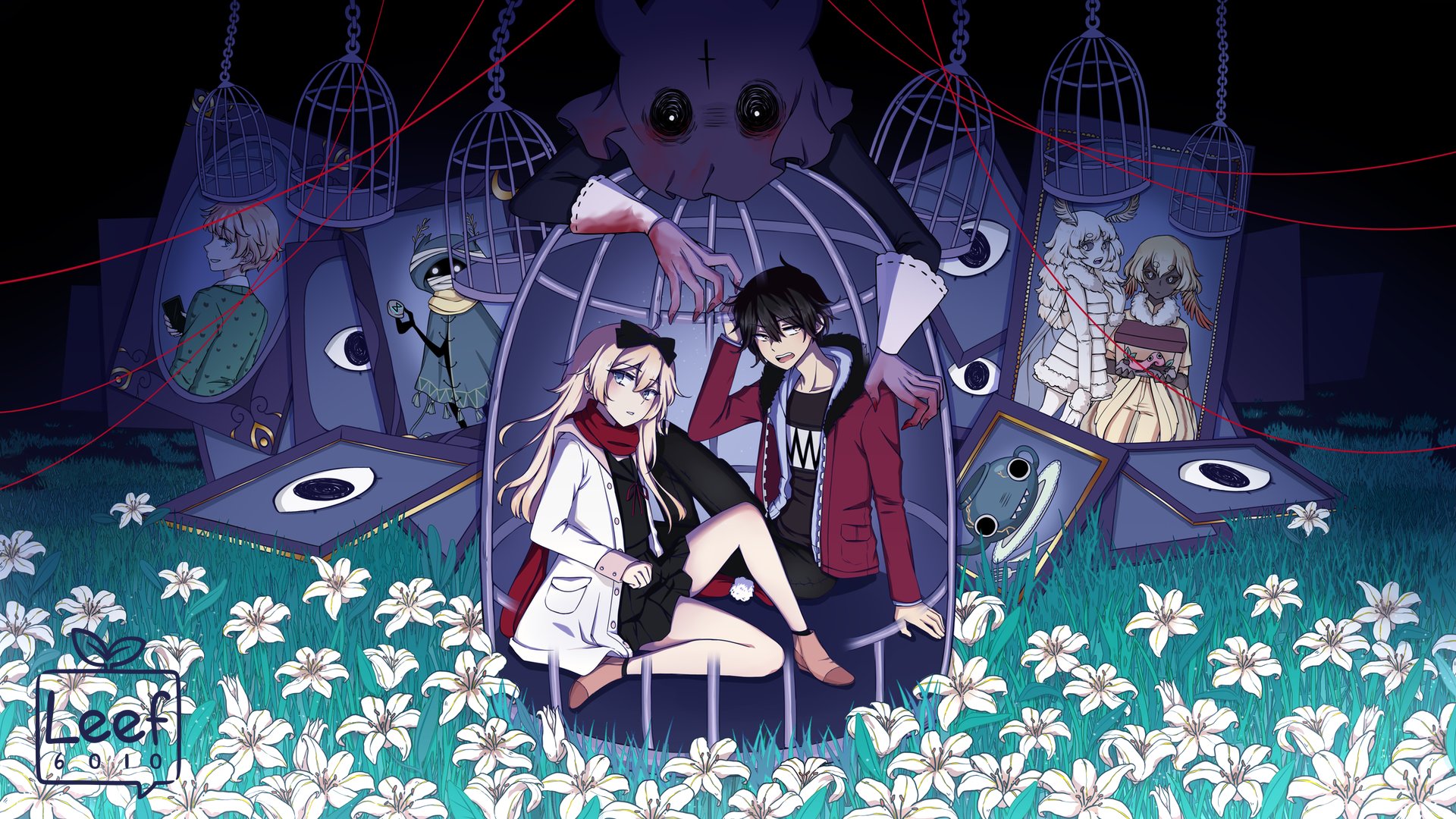Remember, There is Always Another Way: A Review on Leef 6010’s Paper Lily

Indie developers have been crushing the RPG Horror genre for decades—games like The Witch’s House, OMORI, Mad Father, and Ib have become staples within the realm of pixelated horror due to their intricate storylines and stunning graphics. Paper Lily, developed and published by Leef 6010, entered the ring in 2020 with Project Kat–the prologue of the series which promotes itself as a “unconventional RPG horror game in which there is always another way”.
As a precursor, the full game has yet to be released as it’s currently in development, thanks to the wonderful supporters who have gotten Leef 6010’s campaign fully funded on Kickstarter!


We begin asleep in a tuft of grass, the area around us stark white, and little to nothing else happening except for the chirping of birds. As we progress through this space, we are given the tutorial through chalk-drawn doodles of our protagonist until we reach one of the first puzzles. Without spoiling it for those ambitious achievement hunters, we solve a locked door puzzle and continue on through a door before encountering a group of friends playing with a Ouija board.
Here’s where the game’s presence really settles into place.
We are now given the opportunity to see our heroine, Kat, speak for the first time. She explains to the group of friends that she’s preparing to perform a ritual, for a reason even players are left in the dark about. Taken directly from the developer’s itch.io page, Paper Lily is “is a story-based puzzle game where each puzzle has multiple solutions and outcomes.”

One of the most interesting things about this game is that emphasis on the player being able to try unconventional ways to make progress. While there are general tasks given to players, I want to emphasize that the puzzles, such as the reorganizing of desks [Project Kat] or performing some simple math for a fusebox as shown above [Chapter 1], are relatively simple, focusing on exploration to advance to new areas, but they do include some quick-time events and boss fights. For fans of Undertale, this should be an especially exciting feature if you like games that have multiple endings and routes, with, while not the focus, some combat elements.
The premise of Chapter 1 is generally the same as Project Kat. Cutely designed teenage girl. Creepy ritual. Crazy good exploration music [I’m looking straight at you “Investigation Variant 1” by Crawk & plasterbrain]—the remainder of the soundtrack is full of playful tunes and the occasional ominous instrumental looming in the background. Like many other visual novels, Paper Lily showcases character sprites on the sides of the text box to show the reactions of the characters as we are given their dialogue to engage with. In that same vein, the mechanics of the game are smooth and best played on keyboard. While the horror is created through the implementation of subtle jumpscares, random cuts in music, and general dark tone to the coloring of the game, the narrative is truly the star of the show.
 One of the key differences between Chapter 1 and Project Kat would be the goal of the rituals themselves, as in the reasons they are performing the rituals vary between the two protagonists. In the prologue, Kat has tasked herself with performing the Three Doors ritual whereas the protagonist in Chapter 1, Lacie, performs the Bus ritual. These are performed alone and end with a shift in their physical space, as players are provided with a list of steps to complete the rituals. In these new areas, we are expected to find a way back to our original starting point. The rituals performed take into account the space the protagonists are currently in (Kat’s ritual requiring three classrooms and desks for example, hence “Three Doors”), but the objective is to enter the spirit realm as a means to solve their problem.
One of the key differences between Chapter 1 and Project Kat would be the goal of the rituals themselves, as in the reasons they are performing the rituals vary between the two protagonists. In the prologue, Kat has tasked herself with performing the Three Doors ritual whereas the protagonist in Chapter 1, Lacie, performs the Bus ritual. These are performed alone and end with a shift in their physical space, as players are provided with a list of steps to complete the rituals. In these new areas, we are expected to find a way back to our original starting point. The rituals performed take into account the space the protagonists are currently in (Kat’s ritual requiring three classrooms and desks for example, hence “Three Doors”), but the objective is to enter the spirit realm as a means to solve their problem.
Generally speaking, Paper Lily’s charm is its unique twist on family dynamics as a theme. Lacie and Kat both express a longing for a missing family member and have suffered from feeling ostracized from their classmates. Since exploration is how we come to learn these things about our heroines, it’s highly suggested to allow yourself to wander in spaces, interacting with even the most mundane of things, to learn how they, the main characters, see the world around them. Without giving too much away, Leef 6010 allows their players to immerse themselves in their world, slowly learning the complexities of the characters and their motivations.
 The developers also make use of intentional symbolism in the graphic design of their title screen art (as referenced at the beginning) and on the interface of the text box–the core element tying these things together is the red string of fate. In Japanese legend, which deviates from its origin in Chinese folklore, the red string is used to symbolize “all those with whom we will make history and all those whom we will help in one way or another.” Even though the strings will tangle, it is understood that they will never be broken—those who are important to you will always cross your path in some way or another no matter the distance.
The developers also make use of intentional symbolism in the graphic design of their title screen art (as referenced at the beginning) and on the interface of the text box–the core element tying these things together is the red string of fate. In Japanese legend, which deviates from its origin in Chinese folklore, the red string is used to symbolize “all those with whom we will make history and all those whom we will help in one way or another.” Even though the strings will tangle, it is understood that they will never be broken—those who are important to you will always cross your path in some way or another no matter the distance.
 You may also notice the cages in a field of lilies in the title image. Besides cages representing feelings of restriction, the lilies work as emphasis here as they express purity, innocence, and rebirth. Lacie and Kat are characters that have been restrained and exiled, but yearn for acceptance. For a taste of freedom. What Paper Lily offers to their players is a story of taking risks to return back to a time that brings us comfort regardless of what we may have to sacrifice to do so. It gives us the opportunity to choose that path, to twist our own string of fate, through the eyes of Lacie and Kat. All in all, Paper Lily is an ambitious start to what will be, most likely, a story of healing and beauty.
You may also notice the cages in a field of lilies in the title image. Besides cages representing feelings of restriction, the lilies work as emphasis here as they express purity, innocence, and rebirth. Lacie and Kat are characters that have been restrained and exiled, but yearn for acceptance. For a taste of freedom. What Paper Lily offers to their players is a story of taking risks to return back to a time that brings us comfort regardless of what we may have to sacrifice to do so. It gives us the opportunity to choose that path, to twist our own string of fate, through the eyes of Lacie and Kat. All in all, Paper Lily is an ambitious start to what will be, most likely, a story of healing and beauty.
Until then, remember: there’s always another way.
Project Kat and Paper Lily are available, free-to-play, on Leef 6010’s itch.io.
Suggested Games to Play that are Similar to Paper Lily:
- OMORI (2019): Developed by OMOCAT
- Corpse Party (2008): Developed by Team GrisGris, originally by Makoto Kedōin
- The Witch’s House (2012): Developed by Fummy

(All photos shown are courtesy of and credited to Leef6010’s itch.io, Steam, and Twitter page.)

